|
|
In the ever-evolving fashion world, closets can quickly become cluttered with out-of-style or rarely worn pieces. But what if those unloved garments could become an untapped source of income? Today, more than ever, selling used clothes online has become a viable business venture, allowing fashion enthusiasts to turn their discarded wardrobe into cash.
The concept of transforming “Rags to Riches” refers to the transition of unwanted clothing – the “rags”– into a profitable venture – the “riches.” With the help of various online platforms, anyone can easily embark on this lucrative journey. These platforms provide the perfect marketplace for second-hand clothes, offering an easy-to-use interface, a wide-reaching audience, and efficient selling procedures.
In this article, we explore 9 of the best platforms for selling clothes online. We delve into each platform’s unique features, pros and cons, and how they can aid you in your journey from rags to riches. So whether you’re a seasoned reseller or a beginner looking to dip your toes into the waters of online selling, read on to learn how you can turn your forgotten wardrobe into a thriving online business.
Key Takeaways
- Selling clothes online helps turn unloved garments into profit, contributing to sustainability.
- Online platforms like eBay, Poshmark, and ThredUp provide expansive marketplaces for resale.
- Each platform caters to unique demographics and styles, impacting success.
- Understanding your customers’ preferences and strategic pricing are crucial.
- Reselling offers an opportunity to run a profitable business while reducing textile waste.
Understanding the Online Clothing Resale Market
The online clothing resale market is a dynamic world where fashion trends are continuously evolving. A piece that might have been all the rage last season could be out of style this season, only to become a vintage must-have next season. The ebb and flow of these trends fuel the online resale market.
This market is not just about making profits off discarded clothes, but it also stands as a testament to sustainable living. By giving pre-loved clothes a second chance, we can reduce textile waste, thus contributing to a more eco-friendly world. It’s a win-win situation – while sellers make money from items they no longer need, buyers get an opportunity to purchase unique pieces at affordable prices.
Each online platform caters to a unique demographic with distinct tastes. Some platforms may lean towards high-street fashion, while others might favor vintage or luxury brands. Therefore, understanding your potential customer’s preferences and which platform they’re most likely to use is paramount.
Moreover, being aware of how pricing works in this market can give you an edge. Most platforms allow sellers to set their own prices, but it’s essential to balance between making a profit and offering a fair deal to buyers. Researching prices for similar items can provide valuable insights into how much customers are willing to pay.
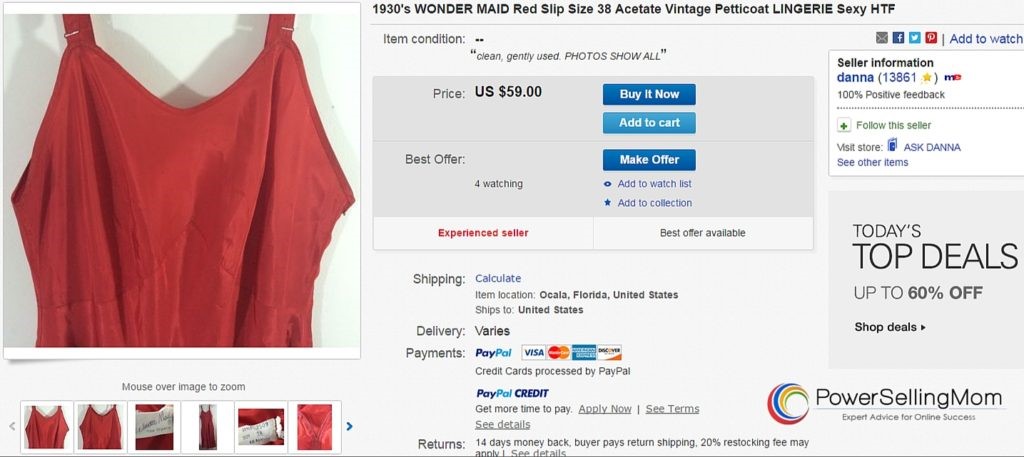
- Exploring eBay: The Original Online Marketplace
eBay, the trailblazer in the world of online marketplaces, has set a standard for buying and selling goods online. Since its early days, this platform has been a hotspot for fashion enthusiasts seeking to sell or buy clothes from varied brands and styles.
With its enormous global reach and broad product categories, eBay offers sellers an expansive marketplace to reach potential buyers worldwide.
One of the distinguishing features of eBay is its auction-style selling method. This unique approach often sparks bidding wars among interested buyers, potentially driving up the final price of items. Sellers have the flexibility to choose between auction-style listings or fixed-price listings depending on their sales strategy and the kind of item they’re selling.
However, with great opportunities come challenges. The vastness of eBay can sometimes be daunting for new sellers. The platform is highly competitive, and standing out among millions of listings can be a tough task. When using eBay, price your items competitively, take quality photographs, write clear descriptions, and offer excellent customer service to increase your chances of success.
Moreover, eBay charges a commission on each sale, which varies depending on the category of the item sold. It’s important to factor in these fees when determining your pricing strategy to ensure you’re still making a profit after all expenses.
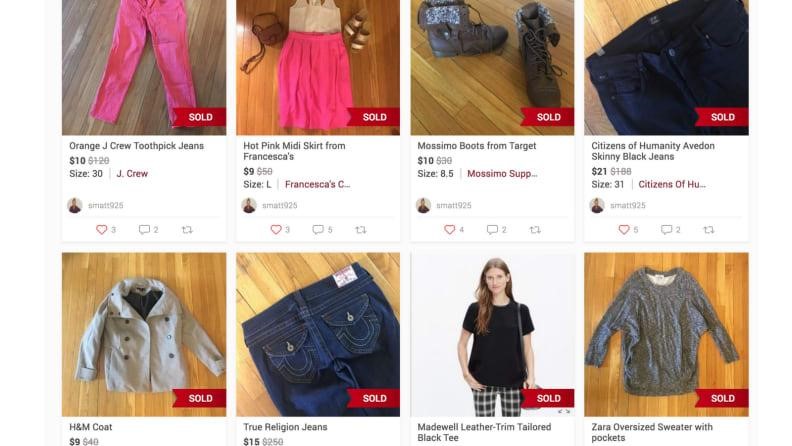
2. Poshmark: A Social Shopping Experience
Poshmark merges the world of social media with online resale, creating a unique and engaging shopping experience. It’s more than just a marketplace; it’s a community where fashion lovers can connect, share, and shop from each other’s closets. With its primary audience comprising style-conscious women, Poshmark has carved out a niche in the online resale market.
What sets Poshmark apart is its social nature. Sellers create “closets” where they list their items, and buyers can follow these closets, leave comments, and share listings. This interaction fosters a sense of community among users and also helps sellers gain visibility. The more active you are on the platform, the more attention your listings may receive.
Poshmark is relatively easy to use, with a user-friendly interface that makes listing items a breeze. You simply upload photos, write a description, set your price, and you’re ready to sell. In addition to this, Poshmark offers pre-paid, pre-addressed shipping labels making the post-sale process hassle-free for sellers.
However, while Poshmark offers many benefits, it does come with some drawbacks. The platform charges a flat commission fee of $2.95 for sales under $15 and a 20% commission for sales of $15 or over. This steep fee is something to consider when deciding if Poshmark is the right platform for your resale business.
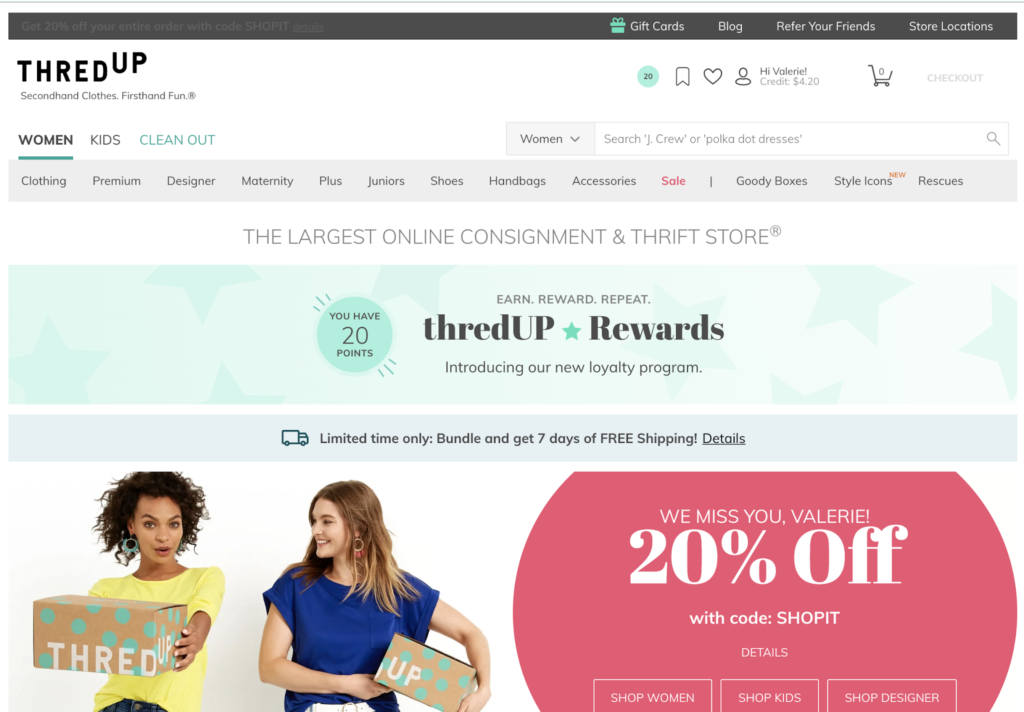
3. ThredUp: The Convenient Option
ThredUp has made a name for itself as one of the most convenient platforms in the online clothing resale market. This platform takes a unique approach to reselling, providing a hassle-free experience for sellers who may not have the time or inclination to manage their listings.
The process is simple: you request a “Clean Out Bag” from ThredUp, fill it with your gently used clothes, and send it back using the prepaid shipping label. Once your items reach ThredUp, their team takes over. They inspect, photograph, list, and price your items for you, removing much of the legwork associated with online selling.
One of the key benefits of ThredUp is its wide demographic reach. The platform sells women’s and kids’ clothing, ranging from high-street brands to luxury labels, attracting a broad spectrum of buyers. Also, ThredUp’s commitment to sustainability draws environmentally conscious consumers looking to shop second-hand.
However, this convenience comes at a cost. ThredUp can take a significant cut from your sales – you can make from you’ll make 3%-80% of what an item sells for based on its selling price, demand, brand, and quality. Also, not all items sent in are accepted for sale; unaccepted items can be donated or returned to you for a fee.

4. Depop: The Home for Unique Finds
Depop, a UK-based platform, is rapidly gaining popularity among the younger crowd for its unique, eclectic mix of items. Often likened to a digital flea market, Depop is the go-to place for one-of-a-kind finds, vintage pieces, and edgy streetwear. With its emphasis on individual style, this platform has cultivated a vibrant community of fashion enthusiasts.
Designed with a social media-style interface, Depop offers an interactive shopping experience. Sellers can create a profile, post individual listings much like Instagram posts and engage with their followers. This setup encourages buyers to explore various profiles, fostering a sense of discovery as they stumble upon unique pieces from different sellers.
Depop also offers an easy selling process. You simply take photos of your item, write a short description, set your price, and list it. The platform charges a 10% commission on sold items, inclusive of shipping costs, which is relatively lower compared to some other online resale platforms.
However, while Depop’s unique style draws in a niche audience, it may not suit sellers with more mainstream or luxury items. Moreover, because the platform is popular with younger users, pricing should be set considering a potentially lower budget range.
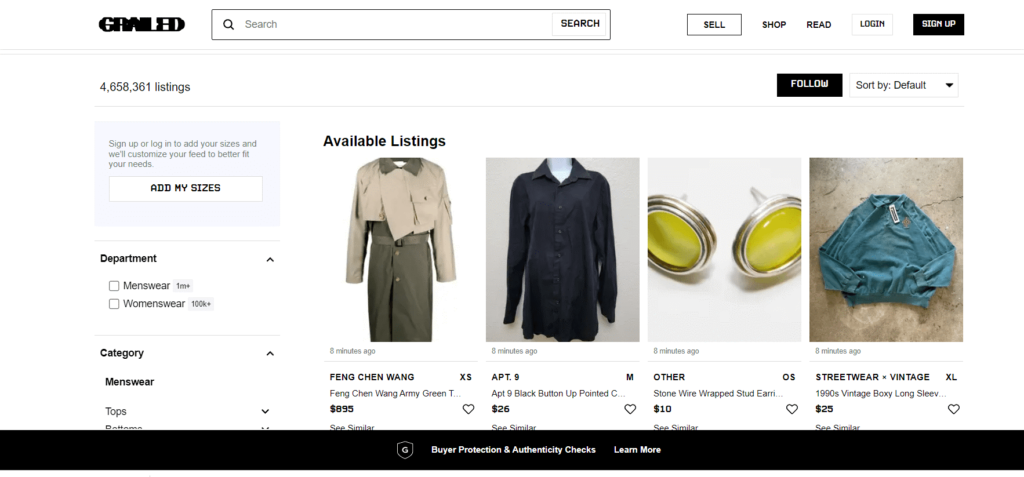
5. Grailed: Where High-End Fashion Meets Resale
Grailed has carved out a unique niche in the online resale market as the go-to platform for high-end fashion. Focused on luxury and designer brands, streetwear, and rare finds, Grailed caters to a discerning clientele seeking quality pieces at a fraction of retail prices.
One of Grailed’s standout features is its curated approach to reselling. Selling on Grailed is relatively straightforward. You list your item with photos, a description, and a price. Once an item sells, Grailed charges a commission of 9%, which is one of the lowest in the online resale market.
Grailed’s focus on high-end men’s fashion means it may not be the best platform for everyone. If you’re looking to sell more casual clothing and own mostly affordable brands, you may find other platforms better suited to your needs.
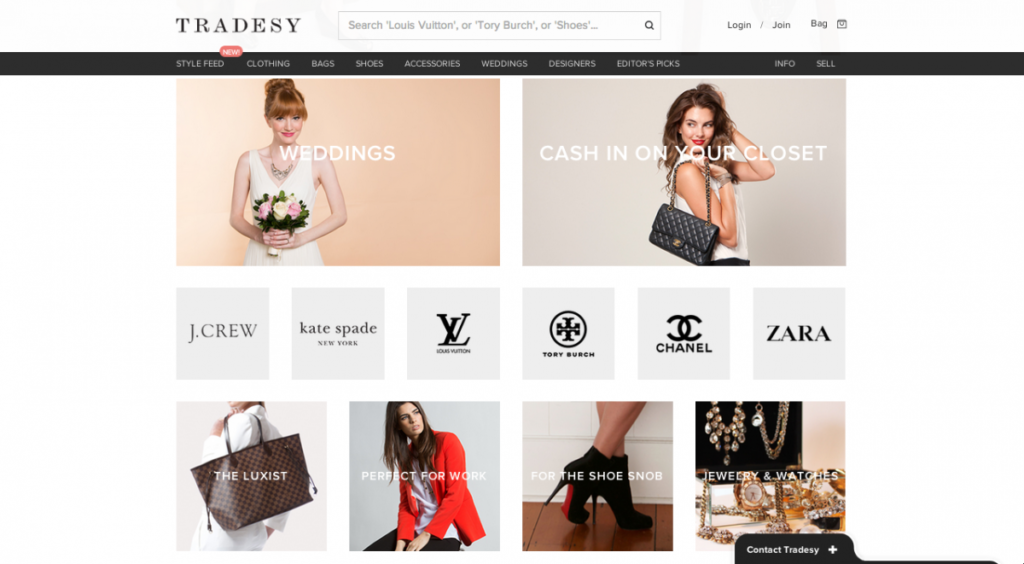
6. Tradesy: Luxury Reselling With Ease
From high-end clothing to luxury accessories, Tradesy is designed for those who appreciate the finer things in life but also love a good deal.
The selling process on Tradesy is simple and hassle-free. All you need to do is take a few photos of your item, write a description detailing its condition and brand, set your price, and you’re ready to list. If your item sells, Tradesy takes a commission of $7.50 for items under $50 and 19.8% for items over $50.
One key advantage of Tradesy is its authenticity guarantee. The platform has a team of experts who authenticate high-value items before they are shipped to buyers. This not only protects buyers from counterfeit goods but also gives credibility to sellers, which can enhance their reputation on the platform.
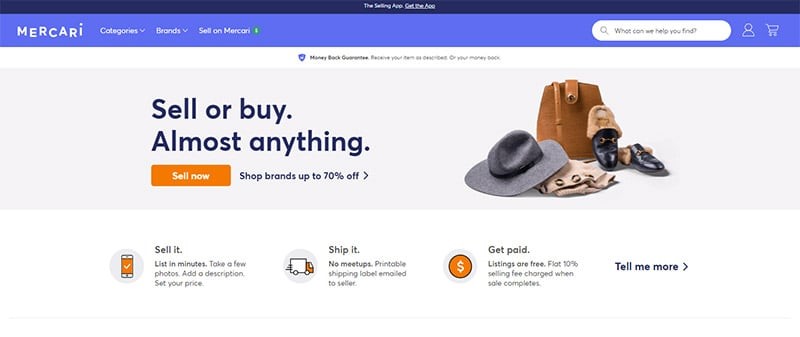
7. Mercari: A User-Friendly Platform for All Kinds of Clothes
Mercari, a Japanese platform gaining popularity in the US, is a versatile marketplace that caters to a wide range of products, including clothes. It’s an excellent platform for those looking to sell a variety of items, from affordable brands to high-end designer pieces.
One of Mercari’s standout features is its user-friendly interface. The platform offers an easy-to-navigate app that makes listing and selling items straightforward. You simply take photos of your item, write a description, set your price, and list it for sale. Once your item sells, you ship it directly to the buyer.
Mercari also offers flexibility when it comes to shipping. Sellers can opt to pay for shipping themselves or pass the cost on to the buyer. This can be an attractive feature for those looking to control their selling costs.
Mercari takes a 10% commission on each sale, which is relatively modest compared to some other platforms but should still be factored into your pricing strategy. It’s also worth noting that while Mercari does have a broad reach, it may not cater specifically to niche markets like vintage or luxury fashion.
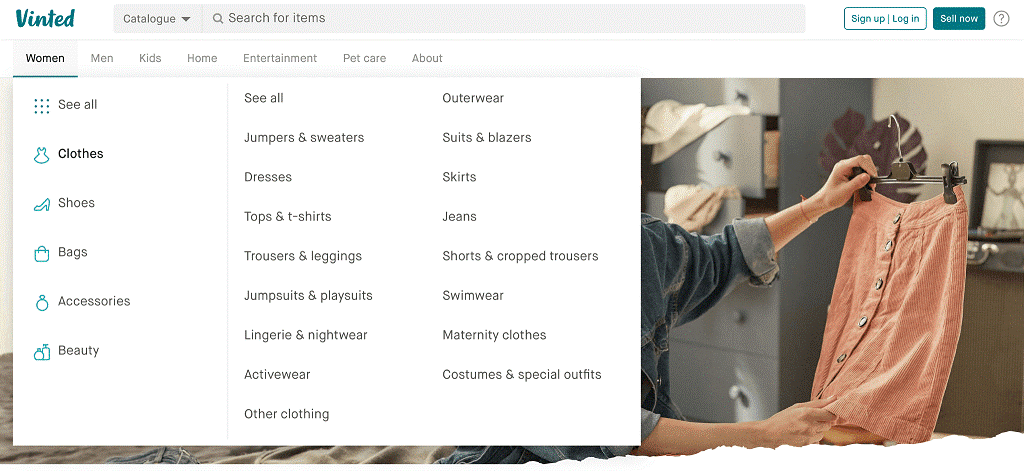
8. Vinted: Revolutionizing the Resale Market with Community-Driven Selling
Vinted, a European platform that has gained traction in the U.S., is making waves in the online resale market with its community-driven approach to selling. Vinted allows users to sell, buy, or swap second-hand clothing and accessories, making it a versatile platform for all kinds of fashion enthusiasts.
A standout feature of Vinted is its emphasis on fostering a community among its users. The platform encourages interaction between sellers and buyers through its direct messaging system and forums. This not only makes the buying and selling process more personal but also builds trust within the community.
Selling on Vinted is refreshingly straightforward. Simply take photos of your item, write a detailed description, set a price, and you’re ready to list. Unlike many other platforms, Vinted does not charge any selling fees – buyers cover the service fee and shipping costs. This means sellers can pocket the full amount they list their items for.
Still, this lack of selling fees may mean that Vinted attracts a high volume of listings, increasing competition among sellers. Additionally, while it caters to a wide range of clothing styles and brands, it may not be the best platform for high-end designer goods.
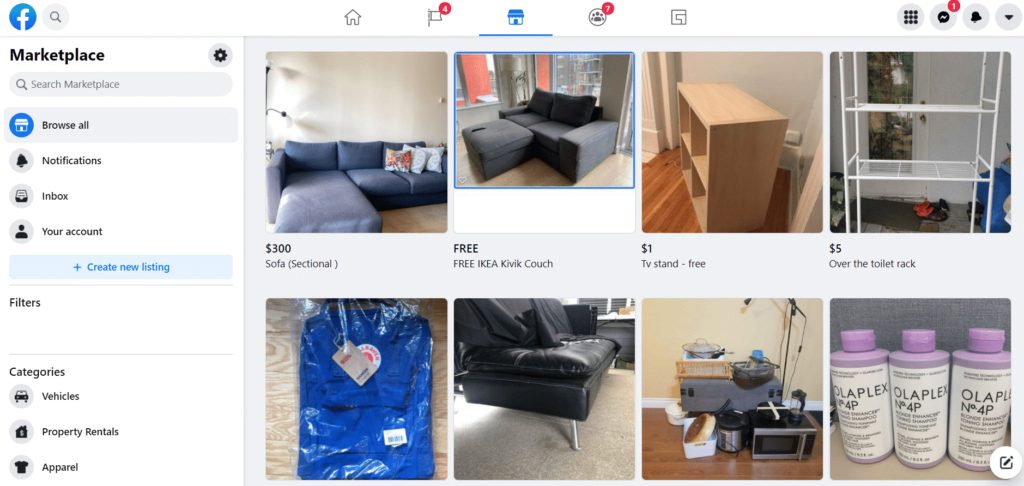
9. Facebook Marketplace: Leverage Your Social Network
Facebook Marketplace has emerged as a popular platform for local buying and selling, including clothes. With its integrated social network structure, Facebook Marketplace allows you to reach potential buyers within your local community and beyond, offering a unique advantage over other online resale platforms.
The process of listing items on Facebook Marketplace is straightforward. Simply take photos of your item, write a detailed description, set a price, and publish your listing. Your item then becomes visible to Facebook users in your local area, and they can message you directly through Facebook Messenger to discuss details or negotiate prices.
One key advantage of Facebook Marketplace is its lack of selling fees. Unlike many other platforms, Facebook does not charge any commission on sales made through the Marketplace. This means sellers can keep all the profits from their sales. Additionally, transactions are usually handled in person, allowing you to avoid shipping costs and complications.
Final Thoughts
Selling clothes online has evolved into a profitable venture, transforming unwanted garments into a source of income. The nine platforms discussed in this article, eBay, Poshmark, ThredUp, Depop, Grailed, Tradesy, Mercari, Vinted, and Facebook Marketplace, cater to different demographics and offer unique features to aid you in your journey from rags to riches.
Whether you’re a veteran reseller or a beginner, the online clothing resale market provides opportunities for profit while contributing to sustainable living. By understanding your potential customer’s preferences and employing strategic pricing, you can successfully turn your cluttered closet into a thriving online business.












